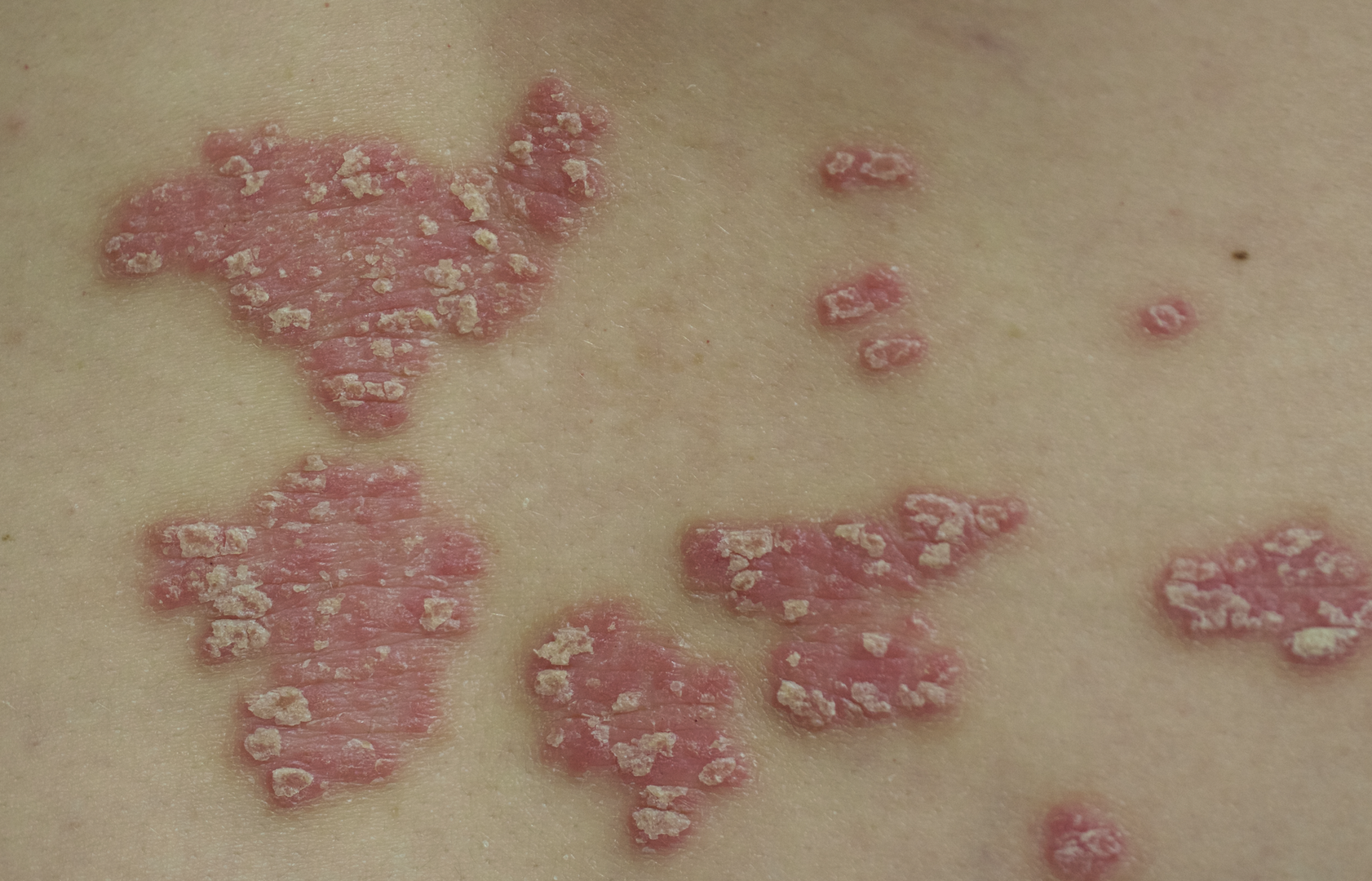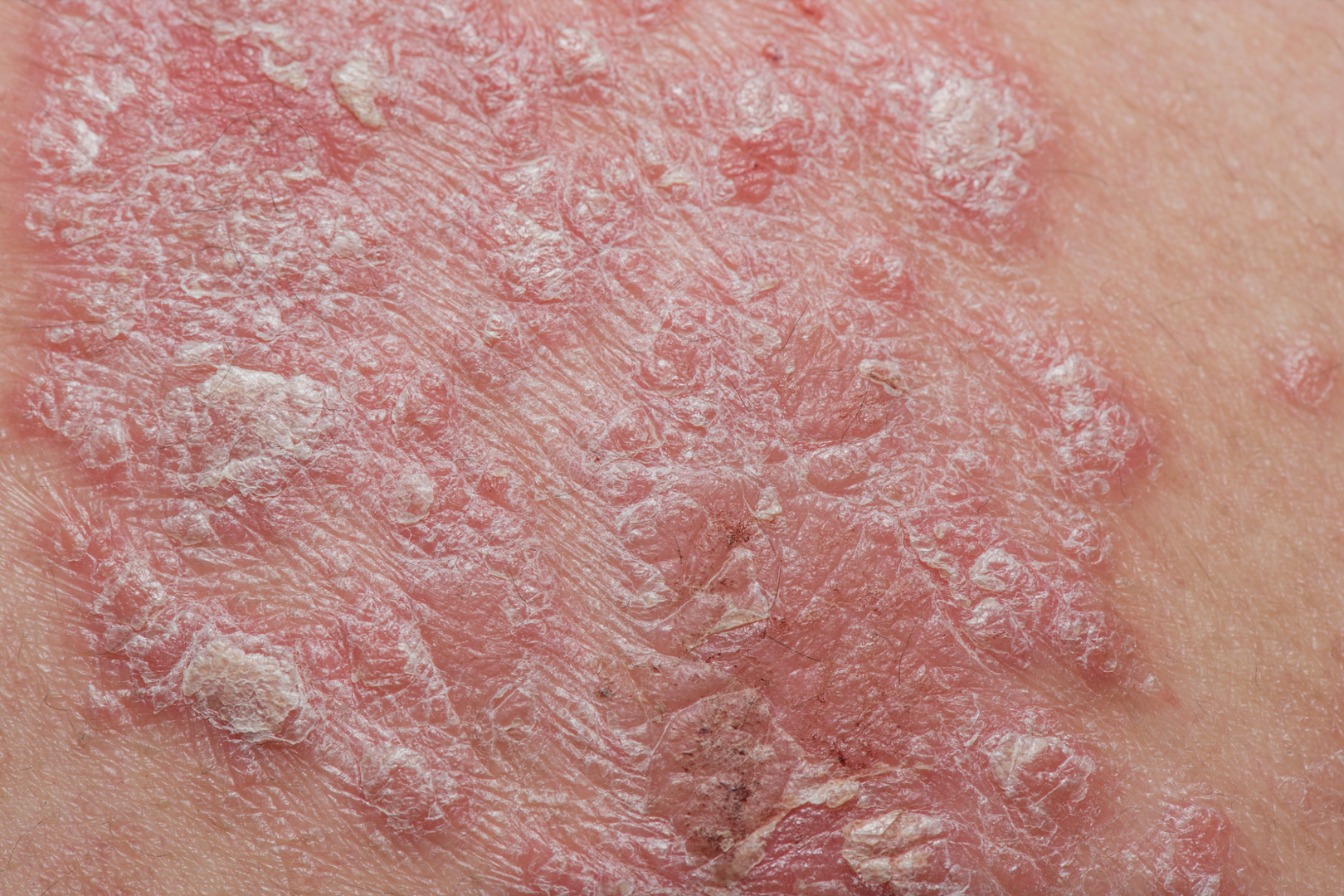Bimekizumab vs. Adalimumab in the Treatment of Moderate to Severe Plaque Psoriasis
Bimekizumab is a humanized IgG1 monoclonal antibody that selectively inhibits interleukins 17A and 17F for the treatment of moderate to severe plaque psoriasis in adults for whom systemic therapy is indicated. The phase III BE SURE clinical trial focused on comparing the efficacy and safety of bimekizumab and the tumor necrosis factor-alpha (TNF-α) inhibitor adalimumab, which currently serves as one of the mainstays of systemic therapy.
Introduction
Recent research has identified additional key pro-inflammatory cytokines in the pathogenesis of psoriasis, namely interleukins (IL) 17A, 17F, and 23. IL-17A and IL-17F form homodimers and heterodimers that act synergistically with TNF-α to stimulate inflammatory processes. Some published studies suggest the superiority of IL-17A inhibitors over TNF-α inhibitors in controlling inflammatory processes in psoriasis.
Bimekizumab is a humanized IgG1 monoclonal antibody that selectively inhibits homodimers and heterodimers of interleukins 17A and 17F, leading to the inhibition of all three dimeric isoforms (17A/17A, 17A/17F, 17F/17F). Published phase III clinical studies (BE VIVID, BE READY, and BE RADIANT) have demonstrated significant clinical efficacy of bimekizumab compared to placebo, IL-23 inhibitor ustekinumab, and IL-17A inhibitor secukinumab. The phase III BE SURE clinical trial focused on comparing the efficacy and safety of bimekizumab and the TNF-α inhibitor adalimumab.

Methodology, Course, and Objectives of the Study
The multicenter double-blind phase III BE SURE study included patients with moderate to severe plaque psoriasis aged ≥ 18 years. Patients with a PASI (Psoriasis Area and Severity Index) score ≥ 12, body surface area affected by psoriasis ≥ 10 %, and an IGA (Investigator's Global Assessment) score ≥ 3 were included. The study was conducted in 77 clinical centers in 9 countries, with a duration of 56 weeks.
After initial screening, patients were equally randomized in a 1:1:1 ratio to receive bimekizumab at a dose of 320 mg subcutaneously once every 4 weeks, bimekizumab at a dose of 320 mg subcutaneously once every 4 weeks up to week 16, followed by every 8 weeks up to week 56, or adalimumab at a dose of 40 mg subcutaneously every 2 weeks up to week 24, followed by transition to bimekizumab at a dose of 320 mg subcutaneously once every 4 weeks up to week 56.

The primary objectives were the proportion of patients achieving ≥ 90% reduction in PASI score (PASI 90) and the proportion of patients achieving an IGA score of 0 or 1 (clear or almost clear skin) at week 16. The secondary objective was to evaluate additional efficacy and safety parameters of the therapy. The analysis of the study’s primary objectives examined the noninferiority of bimekizumab therapy with a boundary value of −10 percentage points and subsequently assessed the superiority of the treatment.
Results
A total of 614 patients underwent screening, and 478 were included in the study (158 in the first group, 161 in the second group, and 159 in the third group). Baseline demographic and clinical characteristics were not significantly different between the groups. The average age of the patients was 44.9 years, and the average PASI score at study entry was 19.8.
At week 16 of therapy, the primary endpoint of PASI 90 was achieved by 86.2% of patients on bimekizumab compared to 47.2% on adalimumab (adjusted risk difference [RD] 39.3%; 95% confidence interval [CI] 30.9–47.7; p < 0.001 for noninferiority and superiority). An IGA score of 0 or 1 was achieved by 85.3% of patients on bimekizumab and 57.2% on adalimumab (adjusted RD 28.2%; 95% CI 19.7–36.7; p < 0.001 for noninferiority and superiority).
A PASI 100 score was achieved by 60.8% of patients on bimekizumab and 23.9% on adalimumab at week 16 (adjusted RD 37%; 95% CI 28.6–45.3; p < 0.001). Patients on bimekizumab also achieved significantly better results in other secondary endpoints compared to adalimumab, such as PASI 75 after 4 weeks of therapy, PASI 100, PASI 90, and IGA 0 or 1 after 24 weeks of therapy.
In the group initially treated with adalimumab, a PASI 90 score was observed in 51.6% of patients at week 24. After transitioning to bimekizumab therapy, this was observed in 81.8% of patients at week 56. In 62% of patients who did not achieve PASI 90 improvement after 24 weeks of adalimumab therapy, a PASI 100 response was achieved after transitioning to bimekizumab therapy.
The overall incidence of adverse events and serious adverse events was similar across all groups. Adverse events such as oral candidiasis (predominantly mild to moderate) and diarrhea were more common in patients on bimekizumab compared to adalimumab. Other common adverse events for patients on bimekizumab included upper respiratory tract infections and arterial hypertension.
Conclusion
The study results demonstrated the noninferiority and superiority of bimekizumab compared to adalimumab (during 16 weeks of therapy) in terms of reducing symptoms and clinical signs of moderate to severe plaque psoriasis, with a higher frequency of adverse events such as oral candidiasis and diarrhea.
(holi)
Source: Warren R. B., Blauvelt A., Bagel J. et al. Bimekizumab versus adalimumab in plaque psoriasis. N Engl J Med 2021; 385 (2): 130–141, doi: 10.1056/NEJMoa2102388.
Did you like this article? Would you like to comment on it? Write to us. We are interested in your opinion. We will not publish it, but we will gladly answer you.

